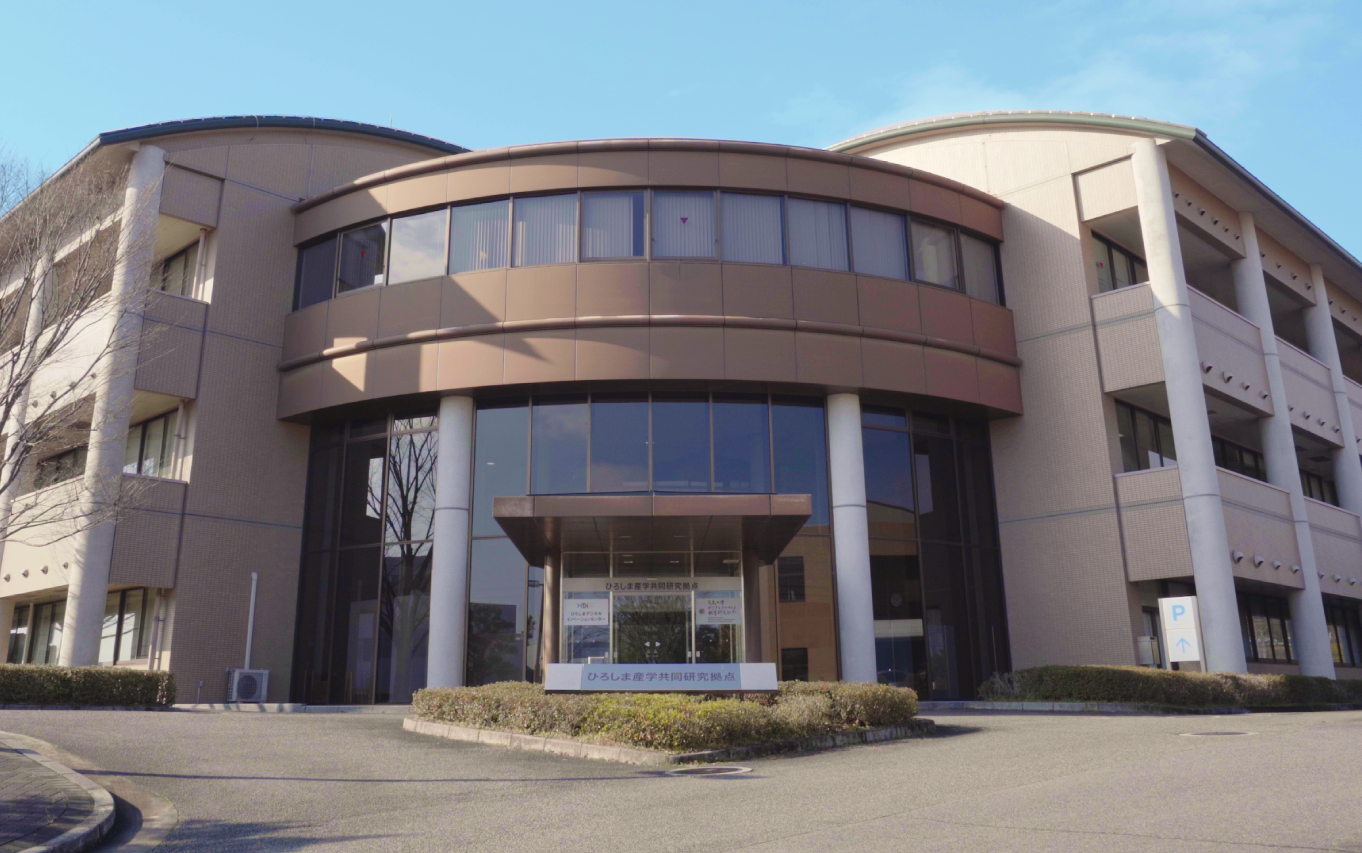 life sciences
life sciences healthcare
healthcare AI・IoT・robotics
AI・IoT・robotics education
education environment・energy
environment・energy food・agriculture
food・agriculture material
material


Research Background
The waves of the so-called 4th Industrial Revolution, when the manufacturing industry incorporates AI, IoT, and big data, are rushing in. For Japanese corporations to maintain their global competitive edge, it’s necessary to respond to this revolution through the “digitalization of making things”.
In the Hiroshima region, we are using Mazda simulation technology to implement effective development known as “Model Base Development (MBD)”. We have already achieved the development of high-efficiency engines, for example. The MBD method can be adopted by many manufacturers as a common technology. Furthermore, Hiroshima University has joint-research relationships with many excellent manufacturing companies. This region has the foundation (competitive advantage) for digital manufacturing.

Research Contents
With this situation providing the background, Hiroshima University considers the research theme of “Using digital technology in manufacturing” as an important one for the school and has been promoting it. As the overall manufacturing value chain heads toward digitalization, superior research and development and the cultivation of human resources should be promoted. In February 2019, the D igital Monozukuri (Manufacturing) Educational Research Center was established with a regional university and regional industry revitalization grant applied by the Cabinet Office.
http://hudmerc.hiroshima-u.ac.jp/
Projects at the Digital Monozukuri (Manufacturing) Educational Research Center
●Project 01
Material model base research
Project Leader
Professor Takayoshi IshimotoPromote through the model base research and development for new material that is environment- and people-friendly. Bring into social implementation through automobiles through industry-academia-government collaboration efforts. Research and development of innovative multifunctional composite materials is conducted using multiphysics simulation to unify the material foundation and material model.
●Project 02
Data-driven smart system
Project Leader
Professor Toru YamashitaWe aim to attain the basic knowledge and technology required to build both the following methods: new development platforms created by the interplay of the model base development (MBD) approach and the data-driven approach, and a data-driven smart system consisting of data-driven controls that can be combined organically with data analysis and machine learning. In addition, we are exploring the possibility of using this knowledge to create problem-solving technology.
● Project 03
Smart inspection and monitoring
Project Leader
Professor Idaku IshiiIndustry, academia, and government are making efforts to realize the smart inspection and monitoring that would make it possible to detect and diagnose anomalies in the manufacturing process and reflect on infrastructure maintenance and system implementation through high-speed image-processing technology that would allow for visualization of vibrational information undetectable to the eye.
Images of social implementation and collaboration with businesses
Many businesses have already expressed interest in participating.
For companies interested in the above project, please contact us from the link below.
After completing the doctoral course at Kyoto University Graduate School of Engineering in 1980, he worked as an assistant teacher at Nagoya University, a lecturer and an assistant professor at Kyoto University. In 1995, he became a professor at Kyoto University Faculty of Engineering, first vice chairman of the Chemical Society of Japan, chairman of the Kinka Chemical Society, chairman of the Society of Polymer Science Japan, and took on his current position in 2019. Currently, he is an emeritus professor at Kyoto University, a visiting professor at Ritsumeikan University, a part-time professor at Doshisha University, a distinguished professor at National Taiwan University, and a cooperative member of the Science Council of Japan.
His specialties are polymer science and material chemistry.
Received Society of Polymer Science Japan Award, Chemical Society of Japan Technical Award, Chemical Society of Japan Award, Purple Ribbon Medal, and Society of Polymer Science Japan Achievement Award.

After completing the master’s course at Kyoto University Graduate School of Engineering, he became an assistant teacher at Hiroshima University Faculty of Engineering, and in 1991 received his PhD in engineering at the same university. From 1991 to 1992, he was a doctoral researcher at the Technical University of Munich, Germany. He became an assistant professor at Hiroshima University Graduate School of Engineering, and then became a professor. Currently, he is a professor of Graduate School of Advanced Science and Engineering. In 2019, he became the division chief and project leader of the Digital Monozukuri (Manufacturing) Educational Research Center, Material Model Base Research Division of Hiroshima University.
His specialties are Organic Material Chemistry
Received Society of Synthetic Organic Chemistry Japan Incentive Award, and Society of Polymer Science Japan Award


After completing the master’s course at Tokushima University Graduate School of Engineering, he received his PhD (in engineering) from Osaka University in 1994. Served as a lecturer at Takamatsu National College of Technology, researcher belonging to Ministry of Education, Culture, Sports, Science and Technology (MEXT) at the University of Tokyo Department of Mathematical Engineering and Information Physics, assistant teacher at Osaka University, and assistant professor at Okayama Prefectural University. Currently, professor at Hiroshima University Graduate School of Advanced Science and Engineering. In 2019, he became the division chief and project leader of the Digital Monozukuri (Manufacturing) Educational Research Center, Data-Driven Smart System Division of Hiroshima University.
His specialty is control engineering.
Received IEEJ (The Institute of Electrical Engineers of Japan) Technical Development Award, Society of Instrument and Control Engineers Technical Award, Commendation for Science and Technology by the Minister of Education, Culture, Sports, Science and Technology, IEEJ Electronics, Information, and Systems Division Distinguished Paper Award, and Japanese Society of Engineering Education Award.

Received his PhD (in engineering) from the University of Tokyo Graduate School of Engineering. He served as an assistant teacher at the University of Tokyo Graduate School of Engineering, assistant professor of Tokyo University of Agriculture and Technology Faculty of Engineering, currently, professor at Hiroshima University Graduate School of Advanced Science and Engineering. In 2019, he became the project leader of the Digital Monozukuri (Manufacturing) Educational Research Center, Smart Inspection and Monitoring Project of Hiroshima University.
His specialty is measurement engineering.
He received Japan Society of Mechanical Engineers Award, Japan Society of Mechanical Engineers Robotics, Mechatronics Division ROBOMEC Commendation, and Best Paper Award.
